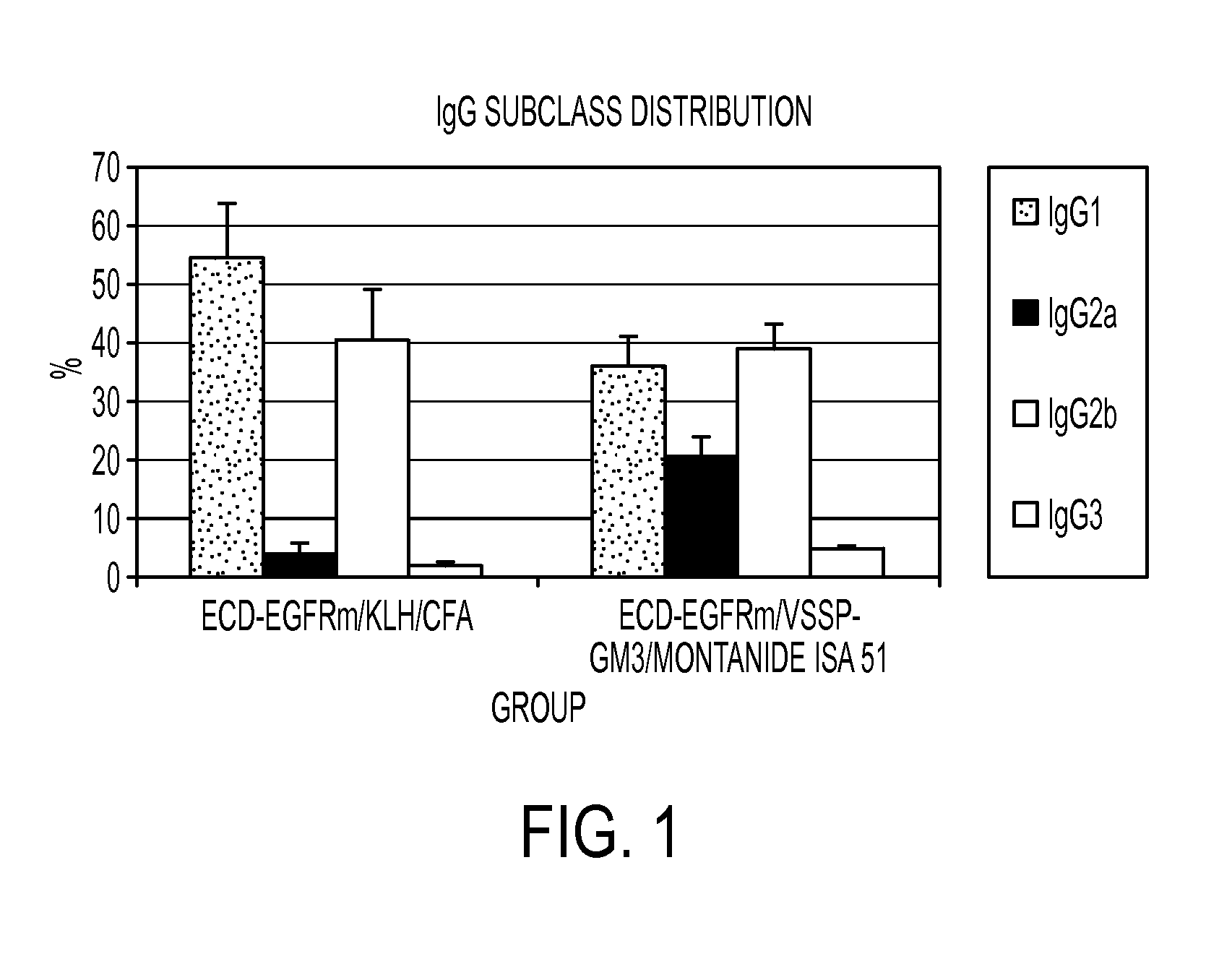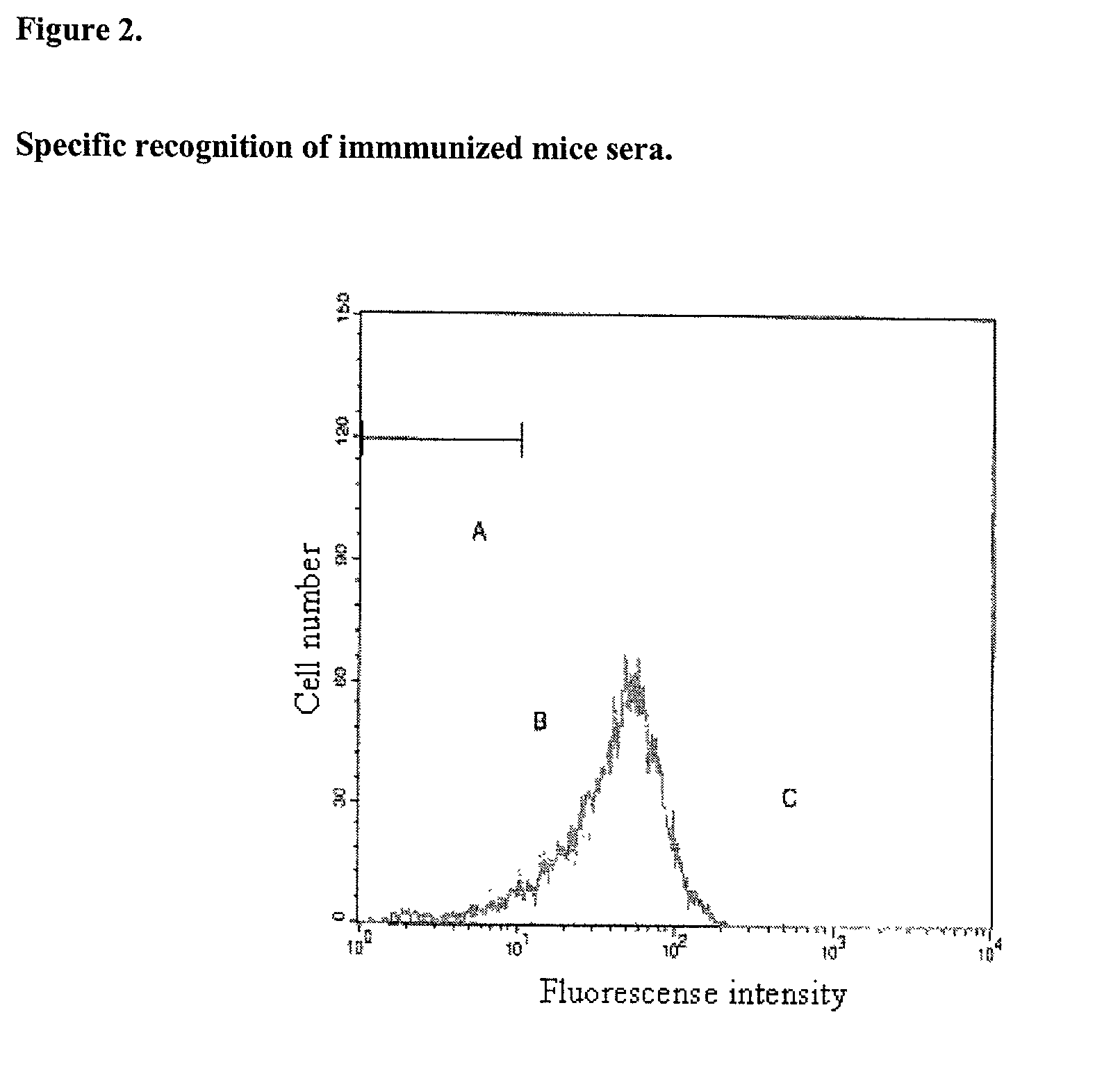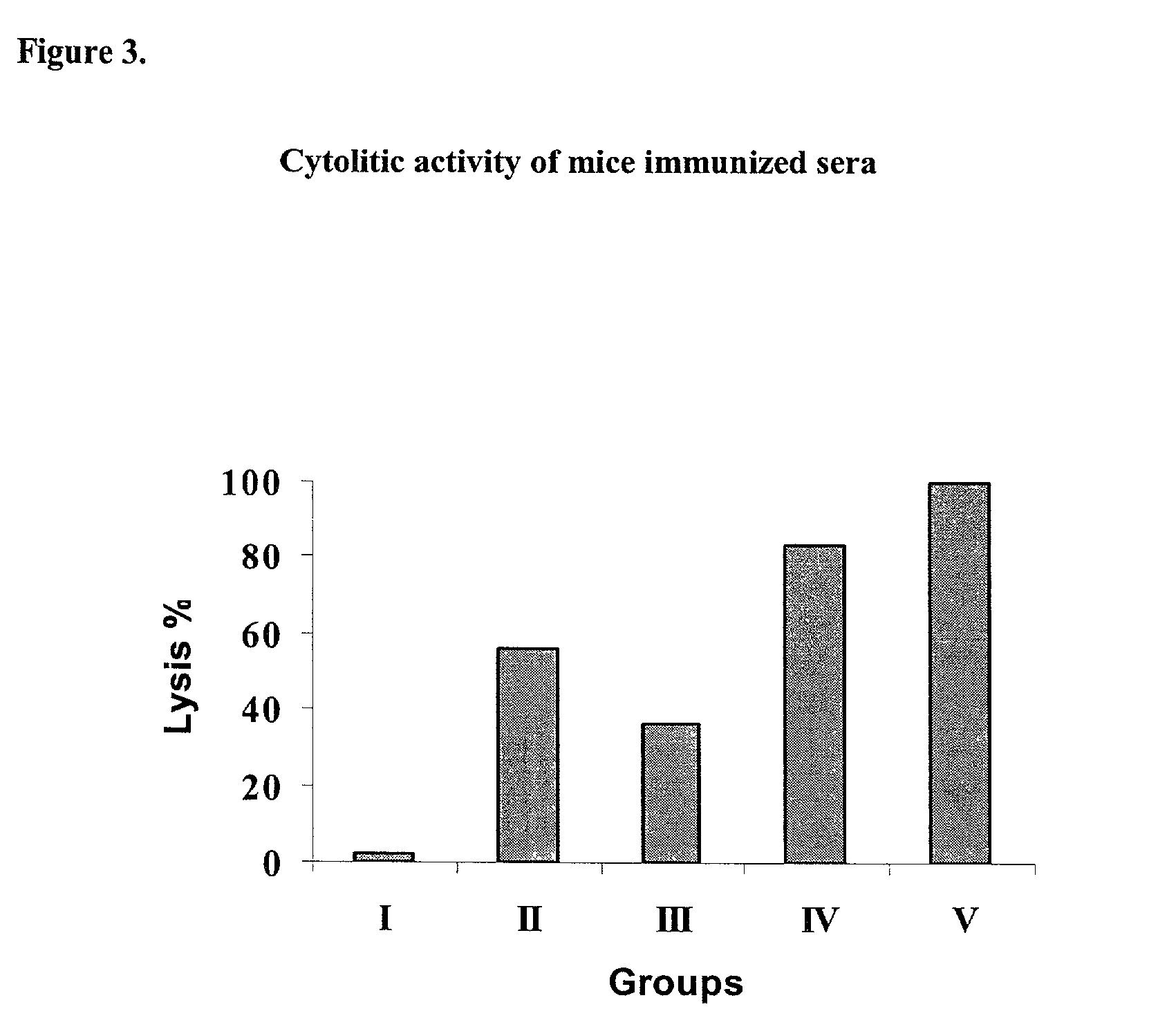Preparations that potentiate immunogenicity in low immunogenic antigens
a technology of immunogenicity and vaccines, applied in the field of human medicine, can solve the problems of poor success achieved to date in preventing and treating a group of infectious diseases, cancer and auto-immune diseases using vaccines, and the inconvenience of being obtained from the original source, and achieve the effect of restoring the function of the immune system
- Summary
- Abstract
- Description
- Claims
- Application Information
AI Technical Summary
Benefits of technology
Problems solved by technology
Method used
Image
Examples
example 1
Obtaining an Antigen of the Vaccine Composition Consisting in the Extra-cellular Domain (ECD) of Murine EGF-R (ECD-mEGF-R).
[0064]The gene encoding ECD-mEGF-R was amplified using the PCR technique, from complementary DNA (cDNA) from mouse liver. PCR was carried out by mixing 1 μg of cDNA with 10 pmoles of each specific primer. Later on, 0.2 mM of each dNTP and 1 U of Taq Polymerase were added. A total of 30 PCR cycles were performed: 9° C., 1 min (except for the first cycle which lasted 3 min); 56° C., 1 min; 72° C., 1 min, and 30 seconds (except for the last cycle which lasted 5 min.). The amplified gene was cloned in the mammalian cell expression vector pcDNA3 (Ampr, f'ori, ColE ori, CMV-Promoter, SV40 ori, SV40pa, Neomycin, Invitrogen), and later on, the HEK-293 cell line was steady transfected with this plasmid. Transfection was carried out by conventional means, and the cells were grown in a selective medium. ECD-mEGF-R is obtained from the supernatant of the HEK-293 / ECD-mEGF-R ...
example 2
Obtaining a Vaccine Composition Comprising ECD-mEGF-R, VSSP-GM3, and Incomplete Freund's Adjuvant (IFA), and Combining all the Components Just Before Administration.
[0066]Proteoliposomes derived from the Outer Membrane Protein Complex (OMPC) from Neisseria meningitidis containing the incorporated GM3 ganglioside were obtained as described in the U.S. Pat. No. 6,149,921.
[0067]The OMPC complex from N. meningitidis used for this purpose was supplied by the “Carlos J. Finlay” Institute (C. Campa et al. EP 301992). 10 mg of this OMPC complex were dispersed in a 0.5 % sodium deoxycholate solution, and 0.1 % sodium dodecyl sulfate solution, additionally containing 10 mg of NGcGM3, by gentle mixing overnight at 4° C.
[0068]Separation of the soluble OMPC-NGcGM3 from the detergents was performed by dialysis, during 14 days, using a 3.5 KDa membrane.
[0069]The dialysate was ultracentrifuged at 100,000 g for one hour, and the immunogenic complex present in the supernatant was filter sterilized.
[0...
example 3
Obtaining a Vaccine Composition Comprising the ECD-mEGF-R, VSSP-GM3, and IFA, by Combining Part of the Components, and Preserving the Mixture Until Administration.
[0073]Proteoliposomes derived from the Outer Membrane Protein Complex (OMPC) from Neisseria meningitidis containing the incorporated GM3 ganglioside, were obtained as described in the U.S. Pat. No. 6,149,921. The amount of vaccine carrier used was 120 μg based on the amount of incorporated gangliosides per vaccine dose.
[0074]In order to prepare the immunogenic material, 1 mg of ECD-mEGF-R was lyophilized, and then 2.4 mg of VSSP-GM3 were added (based on the amount of incorporated gangliosides), in a volume of 1 ml. Both components were mixed at room temperature for 15 minutes, and the mixture was preserved at 4° C. until immunization. Just before administering to mice, 1 ml of IFA was added, and mixed by agitation at room temperature for 20 minutes.
PUM
| Property | Measurement | Unit |
|---|---|---|
| time | aaaaa | aaaaa |
| temperature | aaaaa | aaaaa |
| mass ratio | aaaaa | aaaaa |
Abstract
Description
Claims
Application Information
 Login to View More
Login to View More - R&D
- Intellectual Property
- Life Sciences
- Materials
- Tech Scout
- Unparalleled Data Quality
- Higher Quality Content
- 60% Fewer Hallucinations
Browse by: Latest US Patents, China's latest patents, Technical Efficacy Thesaurus, Application Domain, Technology Topic, Popular Technical Reports.
© 2025 PatSnap. All rights reserved.Legal|Privacy policy|Modern Slavery Act Transparency Statement|Sitemap|About US| Contact US: help@patsnap.com



